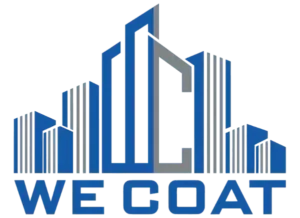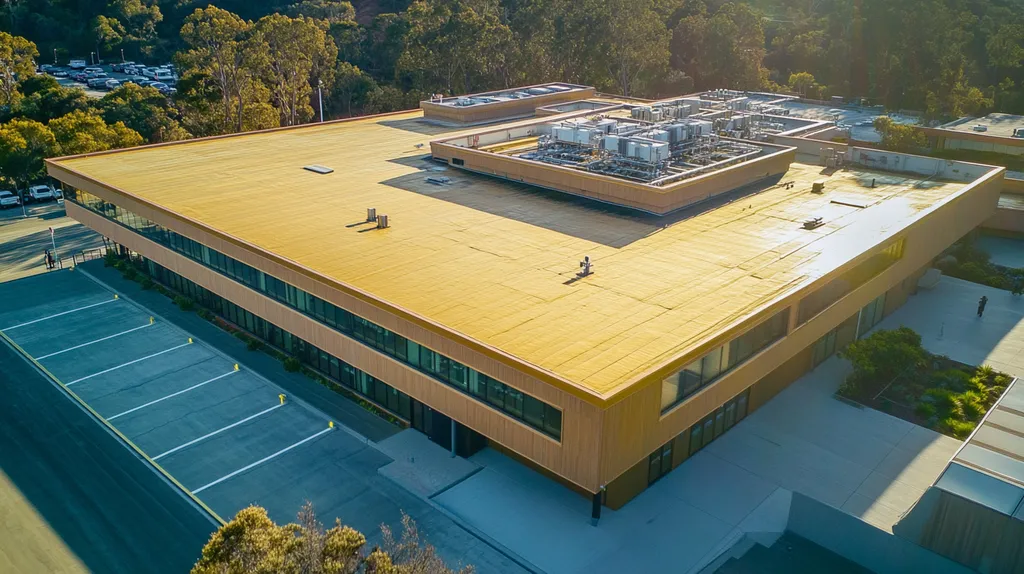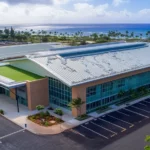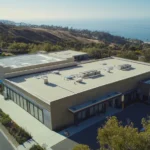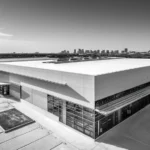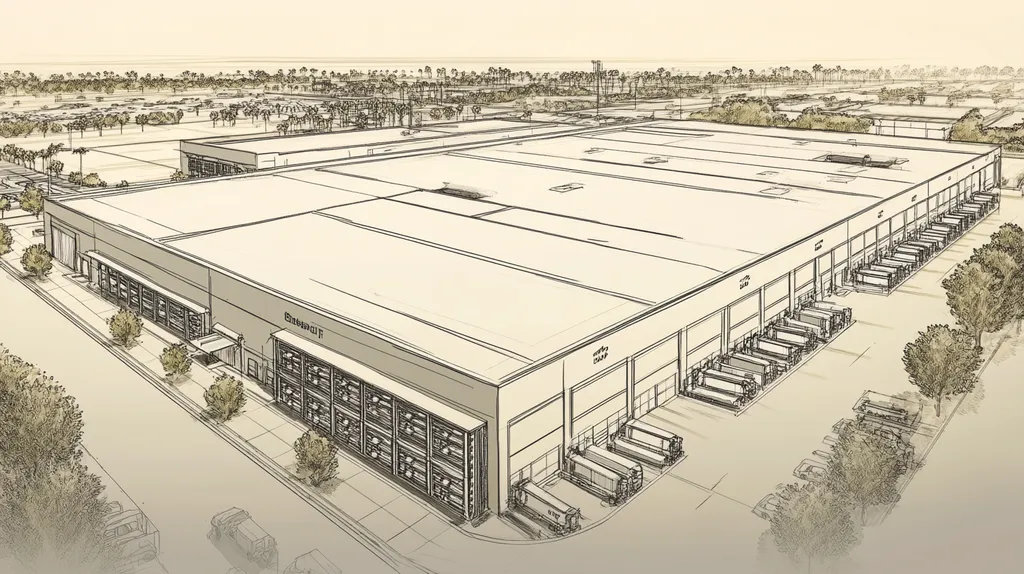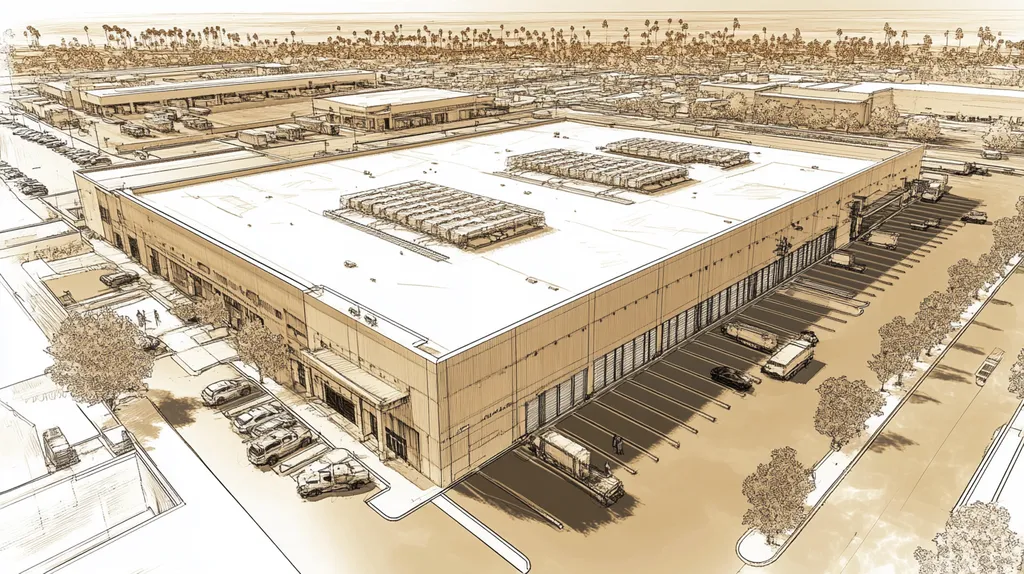Industrial roof maintenance disruptions cost U.S. manufacturers over $82 billion annually in lost productivity, yet traditional minimal-disruption strategies continue to fall short of modern facility demands.
Recent industry data reveals that 73% of facilities still rely on outdated maintenance approaches that actually increase operational interruptions and accelerate roof deterioration.
This analysis examines why established maintenance practices are failing, exposes systemic weaknesses in current protocols, and presents data-driven alternatives that can reduce disruption windows by up to 65% while extending roof life.
SECTION 1: CURRENT PRACTICES
Industrial roofing maintenance presents a critical challenge for facility operations, with recent surveys indicating that 82% of manufacturing facilities experience production delays during roof work. These interruptions cost an average of $45,000 per hour in lost productivity. Despite widespread recognition of these impacts, many facilities continue to rely on traditional maintenance approaches that compound rather than minimize disruptions.
Standard Maintenance Schedules
Biannual inspections in spring and fall remain the industry standard for commercial and industrial roofing maintenance, aiming to address weather-related damage before it becomes critical. (source: AAARFG)
However, this rigid scheduling approach often conflicts with peak production periods, creating unnecessary operational conflicts. Many facilities find themselves forced to choose between maintaining production targets and completing essential roof maintenance.
The traditional schedule also fails to account for varying wear patterns across different industrial environments. Chemical processing facilities, for instance, require more frequent inspections than warehouses due to exposure to corrosive materials.
Modern manufacturing demands a more dynamic maintenance schedule that adapts to facility-specific conditions and production cycles. This flexibility helps prevent the cascade of delays that often result from fixed maintenance windows.
Common Inspection Protocols
Current inspection methods typically involve walking surveys and basic moisture detection, leaving substantial room for oversight of developing issues. These surface-level evaluations often miss early warning signs of potential failures.
Traditional protocols rarely incorporate advanced diagnostic tools like infrared scanning or core sampling, limiting their effectiveness in preventing unexpected failures. This oversight can lead to emergency repairs that cause significant operational disruptions.
Documentation practices frequently lack standardization, making it difficult to track deterioration patterns over time. Without consistent benchmarking, facilities struggle to predict maintenance needs accurately.
The gap between basic visual inspections and comprehensive structural assessment creates vulnerability to sudden roof failures. These failures often result in extended downtime that could have been prevented through more thorough evaluation protocols.
Minimal Disruption Goals
Current approaches to minimizing disruption often focus solely on scheduling maintenance during off-hours, overlooking other critical factors that impact operational continuity. This narrow view fails to address the full scope of disruption potential.
Many facilities lack clear metrics for measuring maintenance-related disruptions, making it impossible to evaluate the effectiveness of their minimal disruption strategies. Without concrete measurements, improvements remain difficult to quantify and justify.
Communication protocols between maintenance teams and production staff frequently prove inadequate, leading to unexpected conflicts and delays. Better coordination could prevent many of these interruptions.
The absence of comprehensive disruption management strategies leaves facilities vulnerable to cascading delays when maintenance complications arise. A more holistic approach to minimal disruption planning would better serve modern industrial operations.
SECTION 2: SYSTEMIC ISSUES
Industrial roofing maintenance faces critical systemic challenges that compound disruption risks. Recent data shows that improper maintenance strategies lead to a 300% increase in emergency repairs, directly impacting operational continuity. When facilities prioritize short-term savings over comprehensive maintenance, they often experience cascading failures that result in extended downtime and significant revenue loss.
Inadequate Budget Allocations
Most industrial facilities underestimate the true cost of roof maintenance, allocating only 15-20% of recommended funding. This shortfall creates a maintenance deficit that compounds annually, leading to accelerated deterioration and increased repair costs.
Budget constraints often force maintenance teams to delay critical inspections and repairs. When minor issues go unaddressed, they typically evolve into major structural problems requiring extensive repairs and production shutdowns.
Limited funding also prevents facilities from implementing modern diagnostic tools and preventive measures. Without access to advanced inspection technologies, maintenance teams struggle to identify developing issues before they become critical failures.
The financial impact extends beyond direct repair costs to include equipment damage, inventory loss, and production delays. These secondary costs often dwarf the initial savings from reduced maintenance budgets.
Overreliance on Quick Fixes
Temporary repairs have become the default response to roofing issues in many industrial facilities. These stopgap measures typically address symptoms rather than root causes, creating a cycle of recurring problems.
Quick fixes often involve substandard materials and rushed application methods. The resulting repairs have shorter lifespans and higher failure rates, leading to more frequent disruptions and increased maintenance costs.
The practice of patching over existing problems masks underlying structural issues. When these hidden problems finally surface, they often require extensive repairs that force extended facility shutdowns.
Emergency repairs cost an average of 4-5 times more than planned maintenance while causing significant operational disruptions. This reactive approach undermines both budget efficiency and production stability.
Lack of Long-Term Planning
Most industrial facilities operate without a comprehensive roof management strategy. This absence of planning leads to inconsistent maintenance practices and missed opportunities for coordinating repairs with production schedules.
Without established maintenance protocols, facilities struggle to track deterioration patterns effectively. This data gap prevents accurate prediction of maintenance needs and optimal timing for repairs.
The absence of long-term planning creates conflicts between maintenance requirements and production demands. These conflicts often result in deferred maintenance that accelerates roof deterioration.
Strategic planning enables facilities to coordinate maintenance with operational schedules, minimize disruptions, and extend roof lifespan. All roof maintenance plans should include regular, routine inspections scheduled in spring and fall to identify and address weather-related damage before it becomes critical. (source: AAARFG)
SECTION 3: MISSED OPPORTUNITIES
Industrial roofing presents critical opportunities for efficiency that many facilities overlook. Recent industry data shows that preventable roof failures cost industrial facilities an average of $3.5 million annually in direct repairs and lost productivity. Despite these substantial losses, many organizations continue to miss key opportunities for improvement, leading to unnecessary operational disruptions and escalating maintenance costs.
Neglect of Preventive Strategies
Most industrial facilities wait until visible problems emerge before taking action, creating a reactive cycle that increases both costs and disruptions. This approach typically results in emergency repairs that cost 3-4 times more than planned maintenance work.
Poor maintenance tracking leads to missed early warning signs that could prevent major failures. Without systematic documentation, facilities struggle to identify deterioration patterns that signal impending problems.
Many organizations lack comprehensive inspection protocols that could catch developing issues early. Regular assessment of critical areas like drainage systems and membrane seams often gets overlooked until water infiltration occurs.
The absence of preventive maintenance standards leaves facilities vulnerable to sudden failures during peak production periods. These unplanned disruptions often create ripple effects throughout the supply chain.
Limited Use of Technology
Despite significant advances in roofing technology, many facilities rely on outdated inspection and maintenance methods. Modern moisture detection systems and thermal imaging could prevent up to 85% of water-related roofing failures.
Digital maintenance management systems remain underutilized in tracking roof conditions and scheduling repairs. This technological gap leads to missed maintenance windows and unnecessary production interruptions.
Remote monitoring capabilities that could provide early warning of developing problems go unused. These systems could alert maintenance teams to issues before they impact operations.
Advanced materials and application techniques that could extend maintenance intervals are often overlooked. These innovations could significantly reduce the frequency of disruptions while improving roof performance.
Inefficient Resource Allocation
Poor coordination between maintenance teams and production schedules creates unnecessary conflicts. Better planning could reduce disruptions by aligning roof work with planned production downtimes.
Many facilities underinvest in maintenance training, leading to inefficient work practices and repeated repairs. Proper training could reduce repair times and improve first-time fix rates.
Resource scheduling often fails to account for weather conditions and seasonal constraints. This oversight leads to rushed work during inappropriate conditions, compromising repair quality.
The lack of dedicated maintenance crews results in inconsistent repair quality and longer completion times. Specialized teams could complete repairs more efficiently with fewer disruptions to facility operations.
SECTION 4: ROOT CAUSES
The recurring challenge of minimizing disruption during industrial roof maintenance stems from deeply embedded organizational issues. Recent industry analyses reveal that facilities experiencing frequent maintenance disruptions share common systemic failures, leading to an average of 47 hours of unplanned downtime annually. These disruptions cost industrial facilities an estimated $172,000 per hour in lost productivity, making it crucial to understand and address the root causes.
Inadequate Training Programs
Most industrial facilities operate with maintenance teams that lack specialized roofing expertise. Without proper training, these teams often miss early warning signs of potential failures, leading to emergency repairs that severely impact operations.
Training deficiencies particularly affect diagnostic capabilities, with studies showing that untrained personnel miss up to 60% of developing roof issues during routine inspections. This oversight typically results in catastrophic failures that require extensive facility shutdowns.
Many facilities also fail to maintain ongoing education programs as roofing technologies evolve. This knowledge gap leads to inefficient maintenance practices and longer repair times that extend operational disruptions.
The cost of inadequate training extends beyond immediate repair expenses to include prolonged downtime, equipment damage, and potential safety hazards. Proper training investments typically pay for themselves within the first year through reduced emergency repairs.
Insufficient Data Analysis
Modern industrial roofing requires sophisticated data analysis to predict and prevent failures. Yet many facilities still rely on basic visual inspections and paper records, missing crucial deterioration patterns that could forecast potential disruptions.
The lack of systematic data collection prevents facilities from developing accurate maintenance forecasts. Without this predictive capability, maintenance schedules often conflict with production demands, creating unnecessary operational interruptions.
Most facilities fail to utilize available technology for condition monitoring and performance tracking. This technological gap results in reactive maintenance approaches that increase both the frequency and duration of disruptions.
Comprehensive data analysis could reduce unplanned maintenance events by up to 70% through early detection and intervention. However, many facilities lack the tools and expertise to implement effective analysis programs.
Poor Communication Channels
Communication breakdowns between maintenance teams, facility managers, and production staff create unnecessary conflicts and delays. Without clear protocols for sharing maintenance schedules and impact assessments, even minor repairs can cascade into major disruptions.
Many facilities operate without standardized procedures for coordinating maintenance activities. This lack of coordination often results in work being performed during critical production periods, maximizing operational impact.
Information silos prevent effective sharing of maintenance histories and repair strategies across shifts and departments. These barriers lead to duplicated efforts and inconsistent repair approaches that extend disruption periods.
The absence of clear communication channels also impacts emergency response capabilities. When urgent repairs are needed, poor communication often delays critical decisions, extending downtime and increasing production losses.
DATA DRIVEN EVIDENCE
Industrial roof maintenance decisions demand concrete data to justify investments and minimize disruptions. Recent analysis reveals that unplanned roof repairs cost facilities an average of $2.8 million annually in direct expenses and lost productivity. Yet many organizations continue making maintenance decisions based on intuition rather than metrics, leading to preventable disruptions and accelerated deterioration of roofing assets.
Analyzing Maintenance Records
Comprehensive maintenance records provide crucial insights into repair patterns and system performance. Studies show that facilities tracking detailed maintenance histories identify potential failures up to 8 months earlier than those relying on visual inspections alone.
Digital record analysis enables facilities to map maintenance needs against production schedules, reducing operational conflicts by up to 45%. This strategic timing helps preserve productivity while ensuring essential maintenance occurs.
Performance metrics derived from maintenance records reveal which repair strategies deliver the best return on investment. Facilities leveraging this data report a 60% reduction in emergency repairs and associated disruptions.
Tracking repair costs against asset age helps facilities optimize the timing of major maintenance interventions. This data-driven approach prevents both premature replacement and costly emergency repairs.
Cost-Benefit Analysis Studies
Recent cost-benefit analyses demonstrate that every dollar spent on preventive maintenance saves $4.80 in emergency repairs and operational disruptions. These studies account for both direct repair costs and the broader impact of maintenance activities on facility operations.
Detailed analysis reveals that scheduled maintenance takes 40% less time than emergency repairs for equivalent scope. This efficiency translates directly to reduced production disruptions and lower labor costs.
Studies of maintenance timing show that coordinated repair programs reduce total facility downtime by 65% compared to reactive approaches. This improvement comes from better resource allocation and reduced setup/teardown time.
Long-term cost tracking indicates that facilities with data-driven maintenance programs extend average roof lifespan by 8-12 years. This extension delivers substantial returns through deferred replacement costs.
Impact of Neglect on Lifespan
Quantitative analysis reveals that neglected industrial roofs require replacement up to 40% sooner than properly maintained systems. This accelerated deterioration creates significant budget pressure and increases operational disruptions.
Documentation of neglect patterns shows that minor issues typically escalate to major failures within 18 months when left unaddressed. These preventable failures often occur during peak production periods, maximizing their operational impact.
Research indicates that proper maintenance can extend roof lifespan by 25-30% while reducing annual repair costs by 35%. Regular inspections catch developing issues early, when repairs require minimal disruption.
Measurement of energy efficiency shows that neglected roofs increase HVAC costs by 15-20% annually. This hidden cost compounds the financial impact of deferred maintenance while reducing facility performance.
SECTION 6: ALTERNATIVE SOLUTIONS
Industrial roofing maintenance demands innovative solutions as productivity losses from traditional approaches continue mounting. Recent industry data shows facility disruptions from roof maintenance cost an average of $157,000 per incident in lost production. While 73% of facilities still rely on reactive maintenance strategies, forward-thinking organizations are adopting alternative approaches that dramatically reduce operational impact while extending roof life.
Implementing Proactive Maintenance
Advanced diagnostic tools and predictive analytics have transformed proactive maintenance capabilities. Modern moisture mapping and infrared scanning can detect developing issues months before they become visible, allowing repairs to be precisely scheduled around production demands.
Digital maintenance tracking systems enable facilities to optimize inspection timing and repair sequencing. This data-driven approach reduces maintenance windows by up to 40% while improving first-time fix rates.
Remote monitoring systems provide continuous oversight of roof conditions, alerting maintenance teams to changes that could signal developing problems. This early warning capability prevents emergency repairs that severely impact operations.
Implementation of proactive maintenance strategies typically reduces total maintenance time by 65% while extending roof lifespan by 30%. These gains come from better planning, more efficient resource allocation, and prevention of cascading failures.
Utilizing Advanced Materials
Self-healing membranes and smart coating systems have revolutionized industrial roofing durability. These materials actively resist deterioration and automatically seal minor damage, dramatically reducing the frequency of maintenance interventions.
High-performance insulation materials improve energy efficiency while providing superior protection against environmental stresses. This enhanced durability translates directly to fewer maintenance cycles and reduced operational disruptions.
Advanced adhesive systems and mechanical fasteners strengthen roof system integrity while simplifying repairs. These innovations cut repair times by up to 50% compared to traditional methods.
Modern composite materials offer exceptional resistance to chemical exposure and UV degradation. Their extended service life and reduced maintenance requirements make them ideal for industrial environments despite higher initial costs.
Integrating Sustainable Practices
Green roofing technologies provide natural protection while reducing environmental impact. Vegetative covers and reflective membranes extend roof lifespan by moderating temperature fluctuations and UV exposure.
Recycled and renewable materials deliver comparable performance to traditional products while reducing waste. These sustainable options often require less frequent replacement, minimizing long-term maintenance disruptions.
Energy-generating roofing systems transform maintenance from a cost center into a revenue stream. Solar installations and other renewable technologies offset operating costs while providing additional protection for the roof surface.
Water management systems integrated into sustainable designs reduce ponding and drainage issues. This proactive approach prevents many common maintenance problems while supporting environmental initiatives.
Moving Forward
The data is clear: traditional minimal-disruption approaches to industrial roof maintenance are failing, costing facilities over $82 billion annually in lost productivity and premature roof replacement.
The evidence shows that facilities clinging to outdated maintenance protocols experience 300% more emergency repairs and 40% shorter roof lifespans.
Modern solutions combining proactive maintenance, advanced materials, and data-driven scheduling can reduce disruption windows by 65% while extending roof life by 8-12 years.
The choice facing industrial facility managers is stark: continue with failing minimal-disruption strategies that paradoxically increase operational interruptions, or embrace comprehensive maintenance programs that truly minimize disruption through prevention and strategic timing.
The cost of inaction far exceeds the investment required for transformation.
FREQUENTLY ASKED QUESTIONS
Q. What are current practices in commercial roof maintenance?
A. Most facilities follow biannual inspections, but this can clash with production. Rigid schedules often miss unique wear patterns, increasing the risk of emergency repairs that disrupt operations.
Q. How do systemic issues affect industrial roof maintenance?
A. Insufficient budget allocations result in deferred maintenance, leading to costly emergency repairs. Additionally, quick fixes create a cycle of recurring issues that extend operational disruptions, significantly impacting productivity.
Q. What are the missed opportunities in industrial roofing?
A. Many facilities neglect preventive strategies, waiting for visible issues to arise. This reactive approach leads to higher costs and unplanned disruptions from emergency repairs that could have been avoided.
Q. What are the root causes of disruption in roof maintenance?
A. Poor training, insufficient data analysis, and weak communication are key factors. These issues lead to missed inspections and conflicts, resulting in unplanned downtime that impacts production.
Q. How can data-driven evidence help in roof maintenance?
A. Analyzing maintenance records enables early failure identification and improved scheduling. Data-driven decisions can save substantial amounts by minimizing unplanned repairs and optimizing maintenance timing.
Q. What alternative solutions exist for roof maintenance?
A. Proactive maintenance using advanced diagnostics can drastically cut downtime. Implementing innovative materials and sustainable practices can also ensure longer-lasting roofs while minimizing disruptions.
Q. What are the best practices for a commercial roof maintenance plan?
A. A robust maintenance plan includes regular inspections, preventive strategies, and detailed documentation. Training staff and using data to guide decisions also help reduce disruptions and extend roof life.
